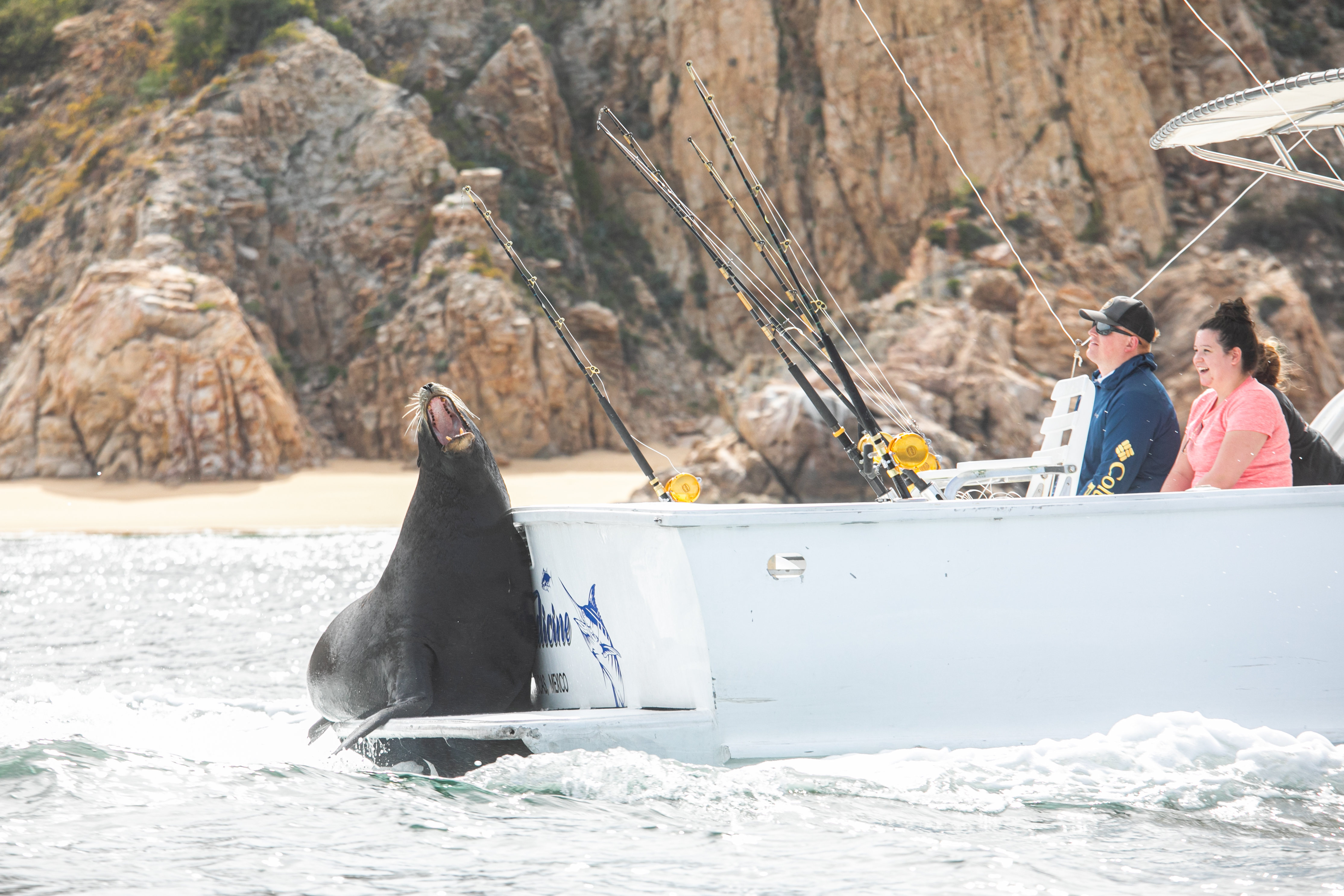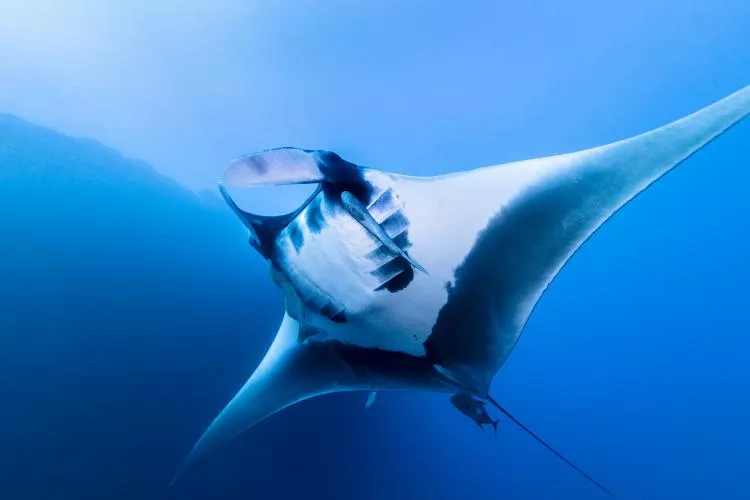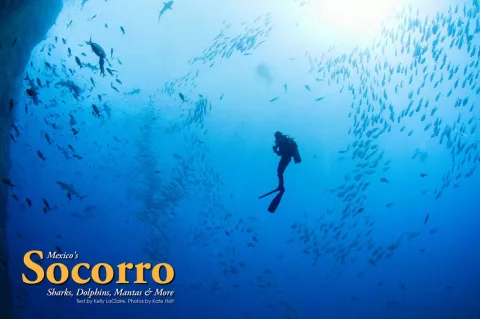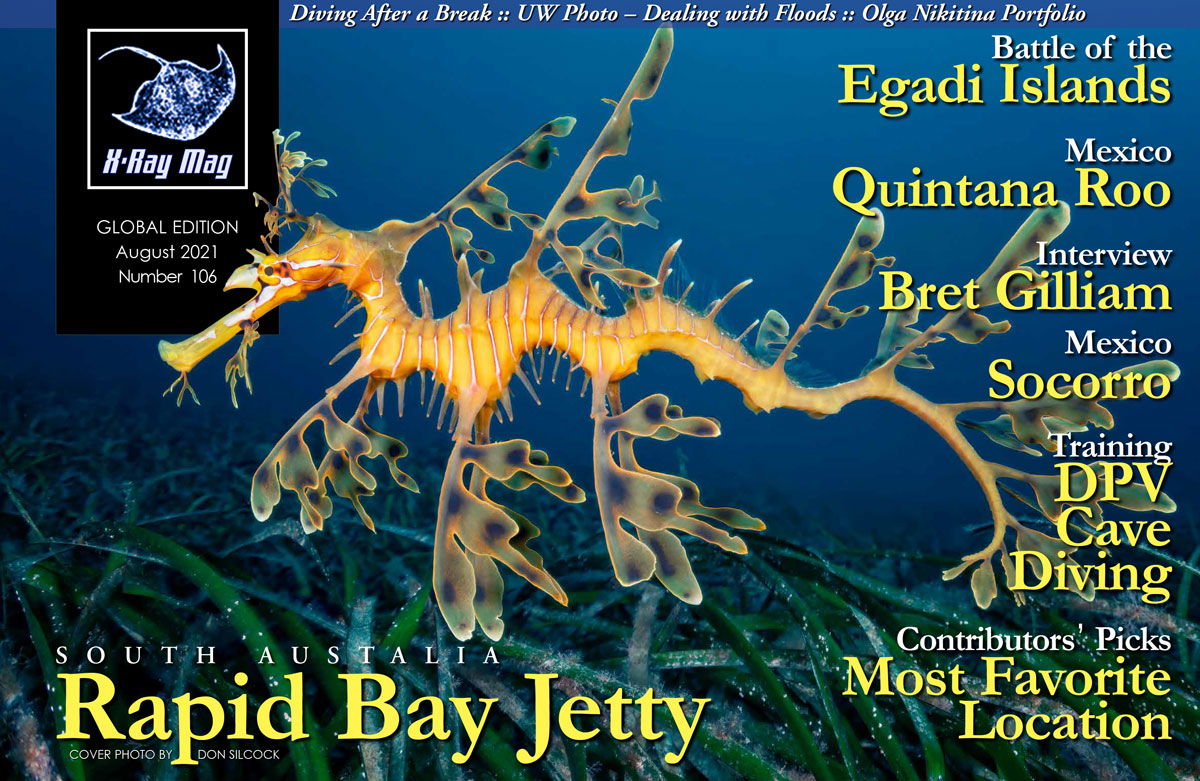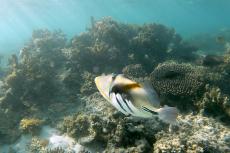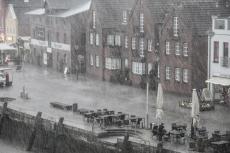We leveled off at 25m and the visibility was perfect. I could see my two buddies to my left—Kate adjusting her housing strobes and Dominic turning on his GoPro action camera. A group of silvertip sharks were casually circling a cleaning station, this one manned by bright yellow angelfish. They gave us a glance, but mostly, they were unconcerned. A few whitetip sharks emerged from the drop-off below to join us. More sharks—my favorite.
Contributed by
I was about to give the “Hell, yeah!” sign to my friends when a blaze of movement pulled my attention in the opposite direction. A bottlenose dolphin was hunting a trevally, and it was serious about it. The trevally zigzagged in erratic flashes, trying to outrun its predator, but the dolphin matched it turn for turn. They shot past, twisting in tight circles around us, and I was amazed by the speed of the chase.
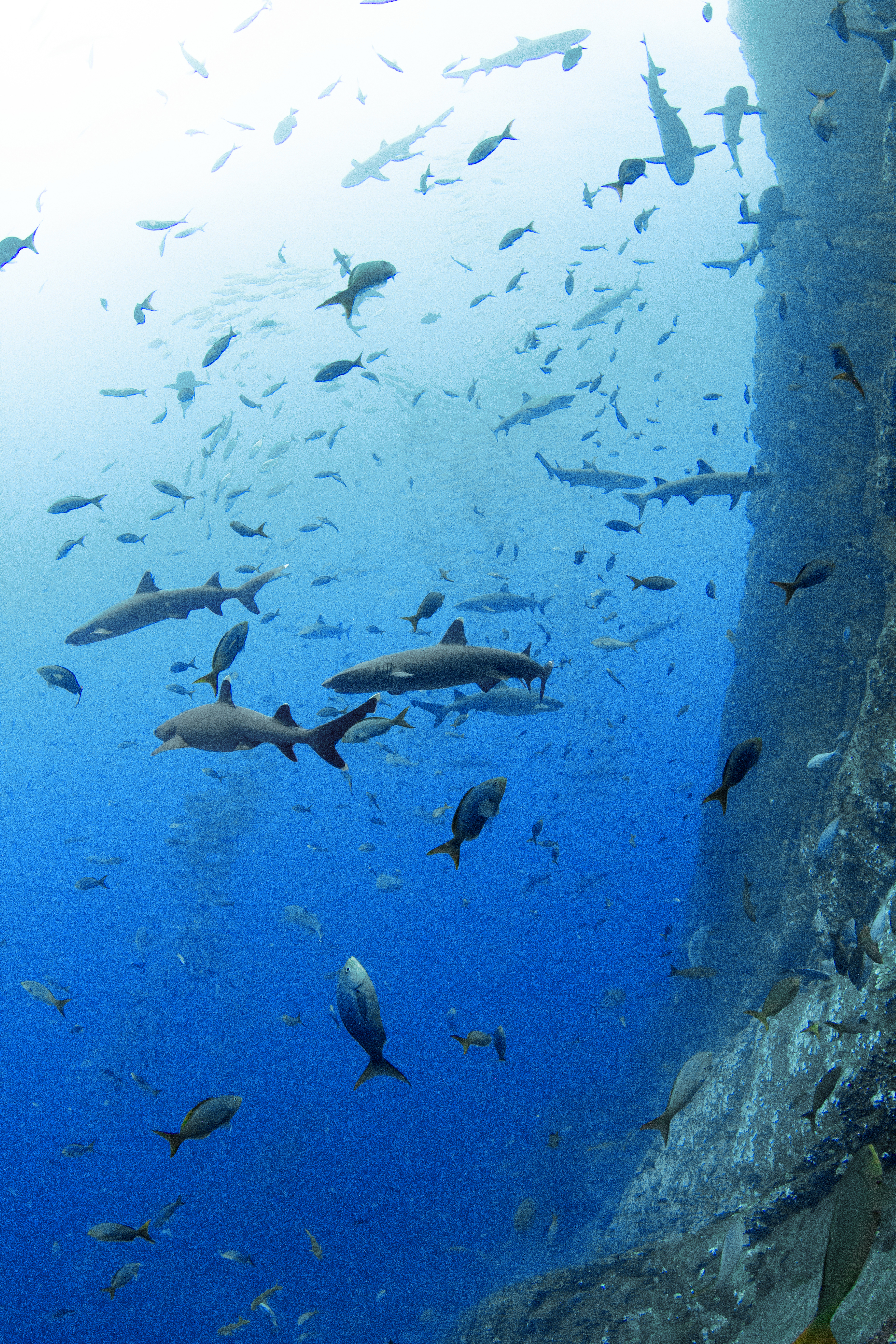
Kate pointed behind me, eyes wide. I turned my head and a black manta, slow and graceful, glided towards us. It was a big one, easily four meters across and in no hurry. It wanted a turn with the angelfish at the cleaning station, but our bubbles were irresistible. The manta’s giant fins rippled slightly, as it was banking in a wide, leisurely turn. The manta passed through our bubble column, so close I could have easily reached up and touched its belly.
The dolphin shot past us again, still after the panicked trevally. They scared a few of the silvertip sharks, which bolted in all different directions.
This was too much all at once. I honestly did not know what to look at first. My attention was being pulled everywhere simultaneously, and I was afraid I would miss something. I looked at my buddies and they laughed. “Where are we?” their eyes asked. “This is insane!”
The liveaboard
We boarded the nearly 50m-long Explorer after sunset and were greeted with champagne and gourmet finger foods. The crew had already taken our gear to the cabins below and were busy casting off mooring lines and preparing the ship for departure. Our divemasters, young and energetic, introduced themselves as they showed us into the spacious, well-appointed salon and galley on the main deck. It was a gorgeous boat, and I knew we were going to be extremely happy on it for the next eight days.
Kate, my cousin and photographer, was given a quick tour of the camera stations, and she was visibly enthusiastic, seeing the expansive shelves, lots of plug-ins, room for laptops and tablets, and plenty of towels. The captain gave us all a short briefing, and we soon slipped out of the harbor. The lights of the small city grew dimmer while the stars multiplied and became brighter and brighter. Butterflies filled my stomach. A day at sea and we would be there. Socorro, I could hardly wait.
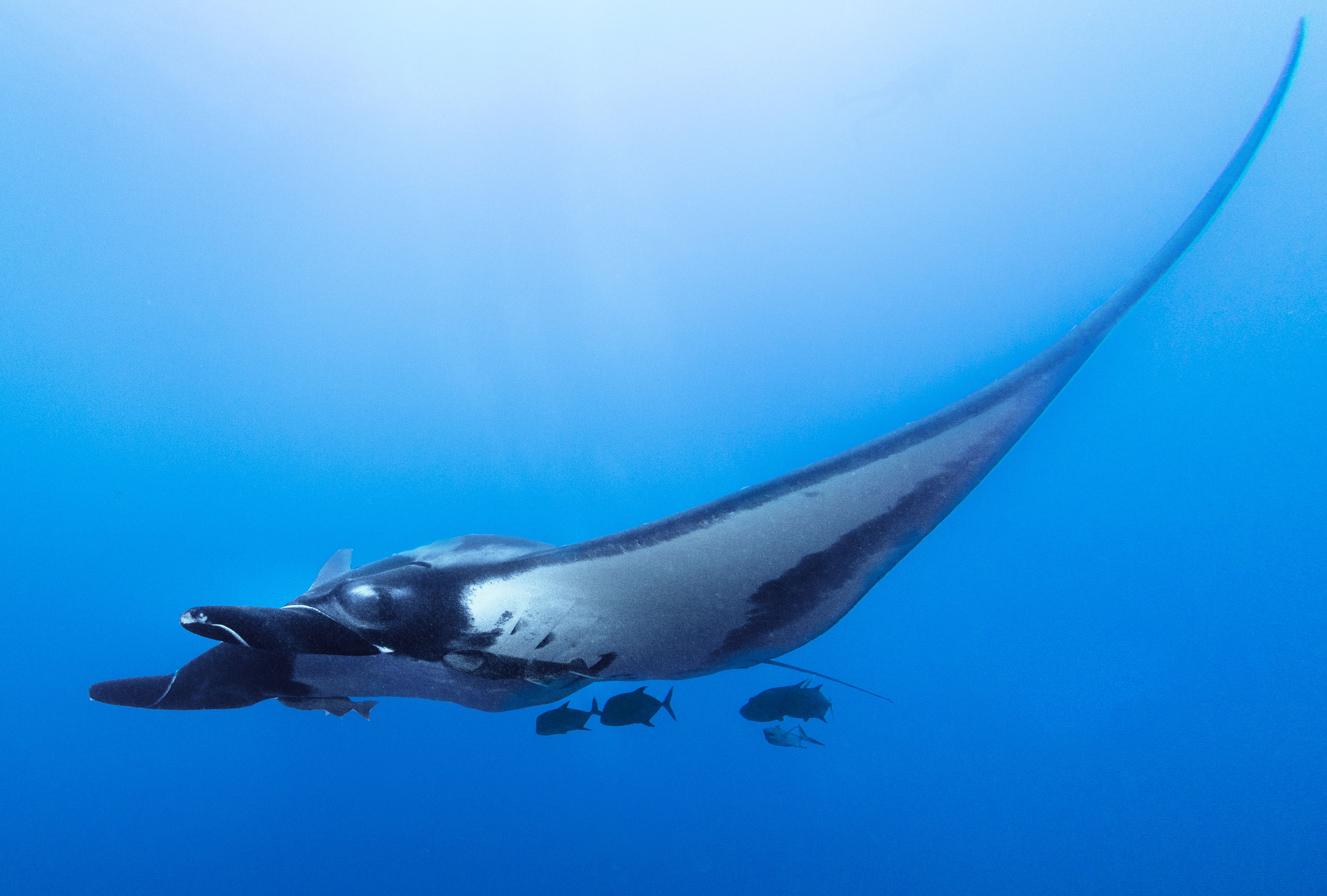
San Benedicto Island
I was too excited to sleep. It was our first day of diving and I was awake by 5:00 a.m. The sun had just peeked over the horizon—probably too early to expect the crew to be up. I was wrong about that. They had already begun bustling about the stern, filling tanks with nitrox and preparing the two small rubber dive boats that would ferry us back and forth from the Explorer to the dive sites.
One of the hostesses had a cup of coffee ready and asked what kind of breakfast I would like once we were back from our first dive as she set out bowls of yogurt, granola, sweet breads and fruit. The butterflies returned, and I made my way to the top deck to watch the sunrise light up San Benedicto Island.
This was the first stop on our eight-day tour through the Revillagigedo Archipelago, often referred to as Socorro, which is one of the main islands in the archipelago. The volcanic islands of Revillagigedo lie roughly 450km southwest of Cabo San Lucas, Mexico, and are heavily protected. Fishing is completely prohibited, and dive time is limited, as are the numbers of boats allowed in the area. But that was exactly what made the diving so fantastic.
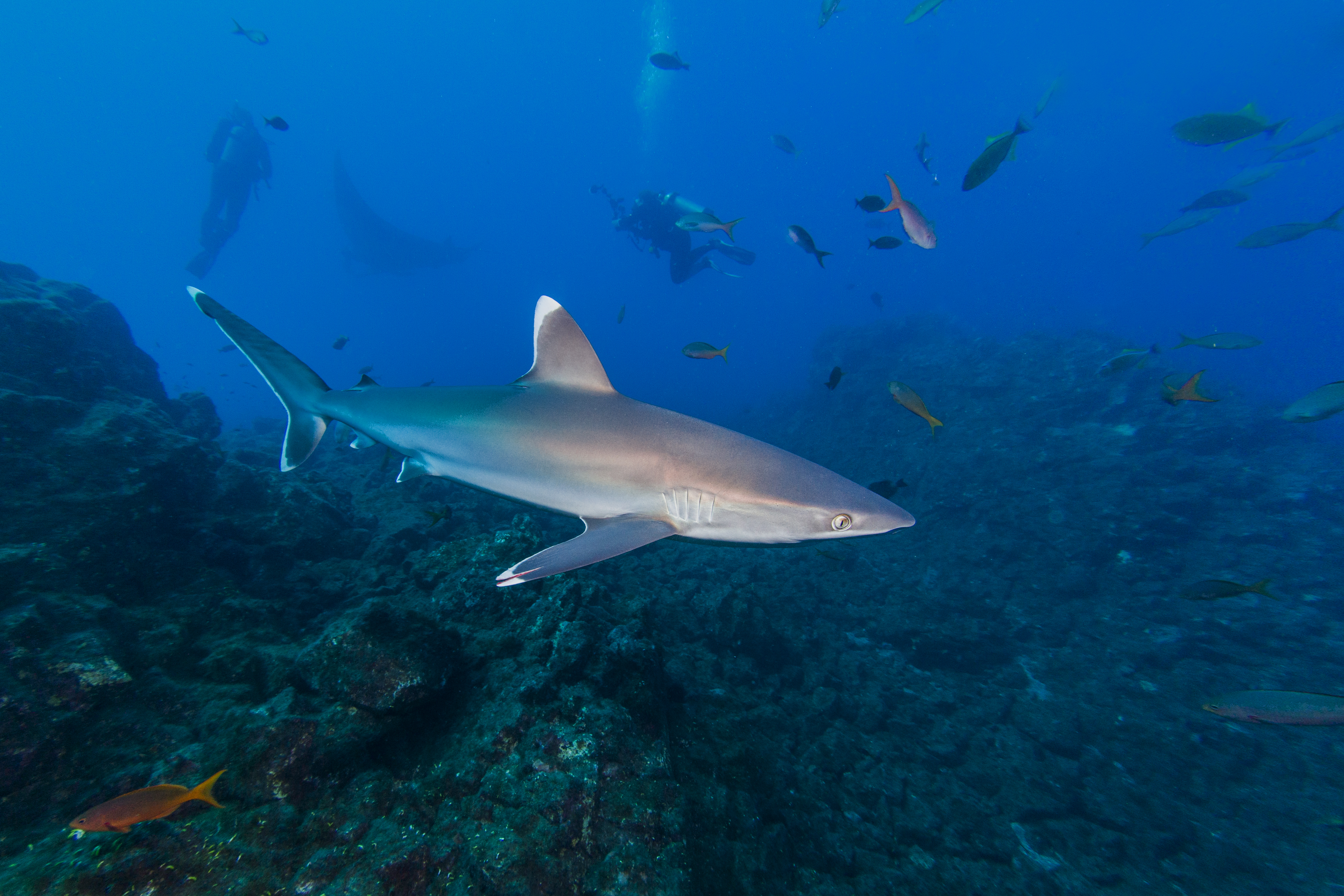
Refresher dive
We found this out quickly, as our first dive in Revillagigedo was just “bonkers”… There was really no other word for it. It was supposed to be just a short refresher dive off the stern to check one’s gear, get one’s weights right and familiarize oneself with the currents. In fact, the divemasters even told us not to expect much. However, this was sheer lunacy. The moment we deflated our BCDs, we realized they had vastly undersold the experience.
We had not been under the surface for even ten minutes before we saw three chevron mantas gliding by to inspect our bubbles. Whitetip sharks, cautious but curious, passed by in small groups of two or three, then made way for the larger, more lethal-looking silvertip sharks that cruised by occasionally. In the rare moments when I actually took a good look at the rocks and sandy areas, I spotted enormous slipper lobsters, eels and stingrays.
By the time my tank was low, two more mantas had visited, circling our group and bathing themselves in our bubbles. It was, in a word, “ridiculous.” It was perhaps the best dive I had ever had, and this was the warm-up? After the dive, I said as much to Yoav, our first mate and divemaster, who replied, “You just wait. It’s going to get even better.” He was not lying.
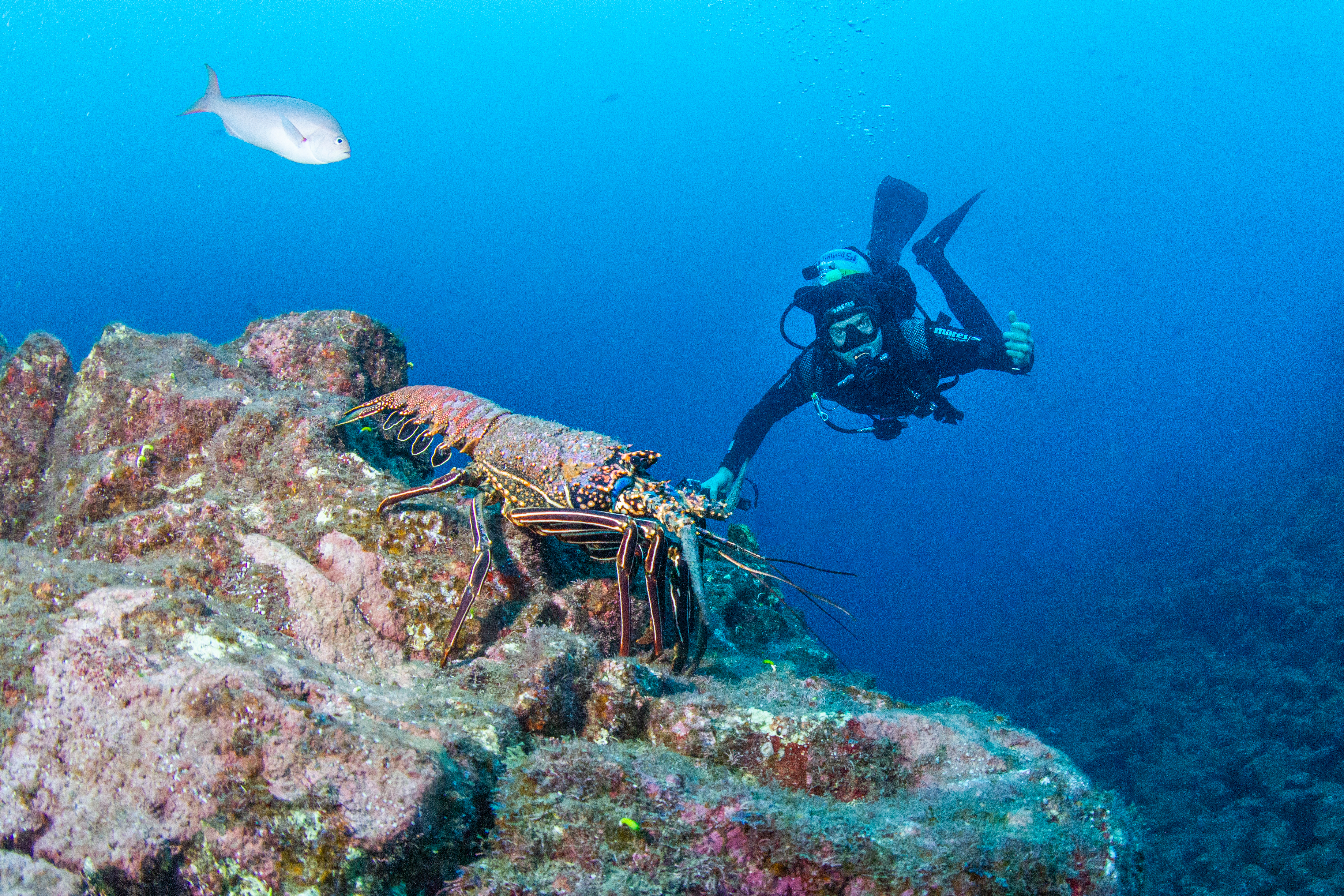
El Canyon—part one
Our first “real dive” was a site called El Canyon, a horseshoe-shaped undersea lava flow, which extended out about half a kilometer from the main body of San Benedicto Island, before dropping off into deep blue water.
The cleaning station at this site sat on a rocky pinnacle at about 30m and was a constant stream of silvertip and whitetip sharks, the occasional large Galapagos shark, and a virtual parade of manta rays. In fact, on our first visit here, we were graced by no less than six of them. The folks at Nautilus like to call them the friendliest mantas in the world, and I do not doubt this is factual. They seem to actually seek out divers and want to get as close to people as possible, gliding within inches of you in many cases. It was completely exhilarating.
We dove El Canyon three times that day, and these large pelagics made appearances on each dive. In fact, there were so many sharks and mantas, I actually lost count of how many we had seen. And, to be honest with you, dear reader, you really do not have to “dive” the site at all; you just find a nice cozy spot along the rocky ridge near the cleaning station, grab on to a handhold and watch. Everything comes right to you. At any time, you can see swarming schools of bigeye jacks, packs of giant bluefin trevally, tiger sharks, bottlenose dolphins—I mean, it is truly endless.
This is a “Nat Geo” dive site every time you get in the water. By the end of the day, we were feeling completely spoiled. How was anything going to top that?
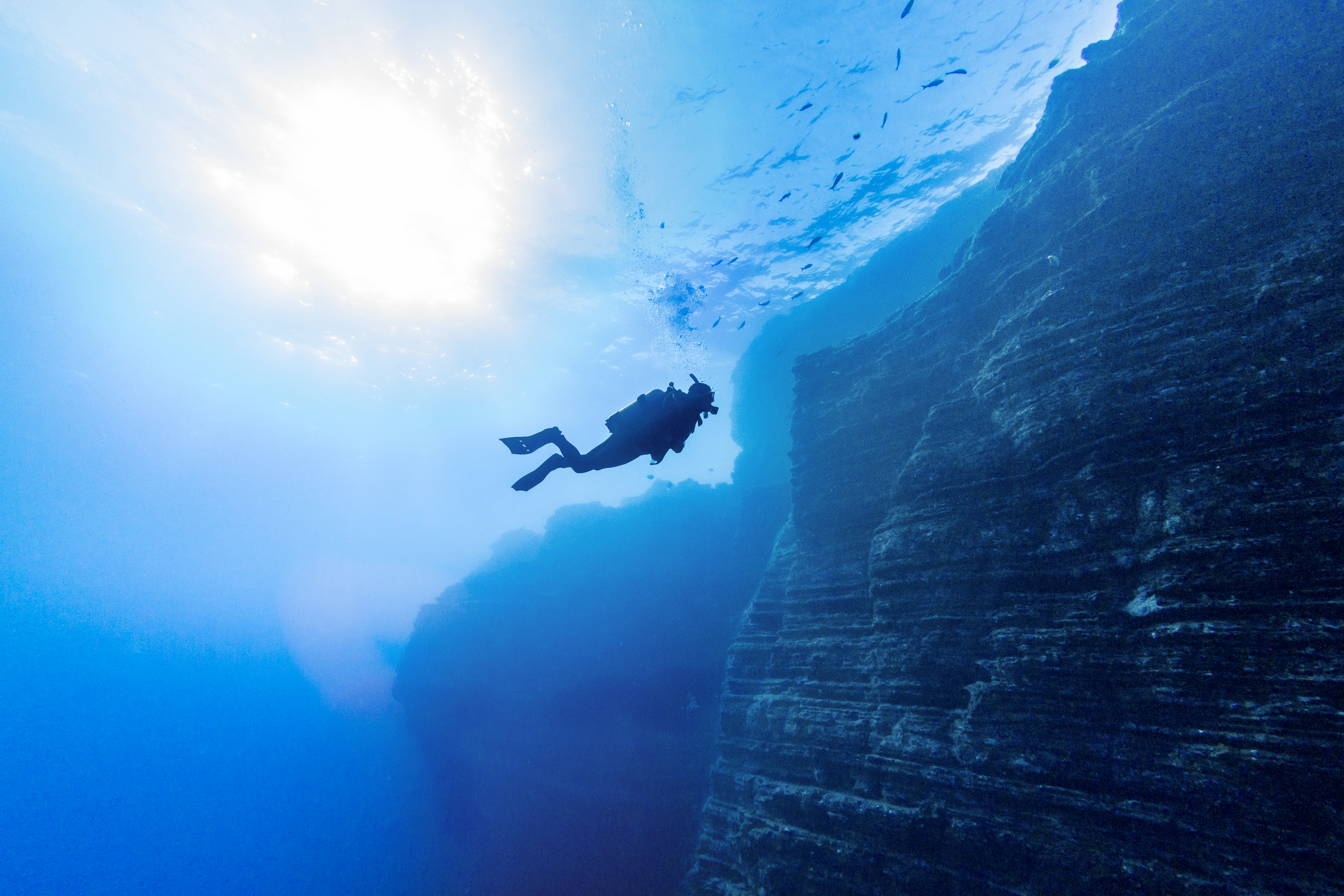
The Boiler
On the far side of San Benedicto Island is the world-famous Boiler dive site—an enormous pinnacle of rock, which shoots up from the deep seabed and almost reaches the surface. The currents swirling around the monolith bring abundant plankton and small fishes, which in turn, bring bigger and bigger animals.
Before we back-rolled off the skiff, which took us out to the dive site from the liveaboard, the divemasters asked us one of the greatest questions ever posed: “Ok, guys, what’s our objective? Mantas and whitetips or schooling hammerheads?” Without missing a beat, we all replied in unison, “Hammerheads!”
A few minutes later, we stopped descending at about 30m and started to slowly fin out towards blue water, the huge rock of The Boiler at our backs. Our dive guide pushed on but kept turning his head to make sure we still had it in sight. We kept the pace slow and easy, just like we had been asked to do, as the hammerheads at Revillagigedo were easily spooked and chasing them was not only forbidden, it was counterproductive and completely useless.
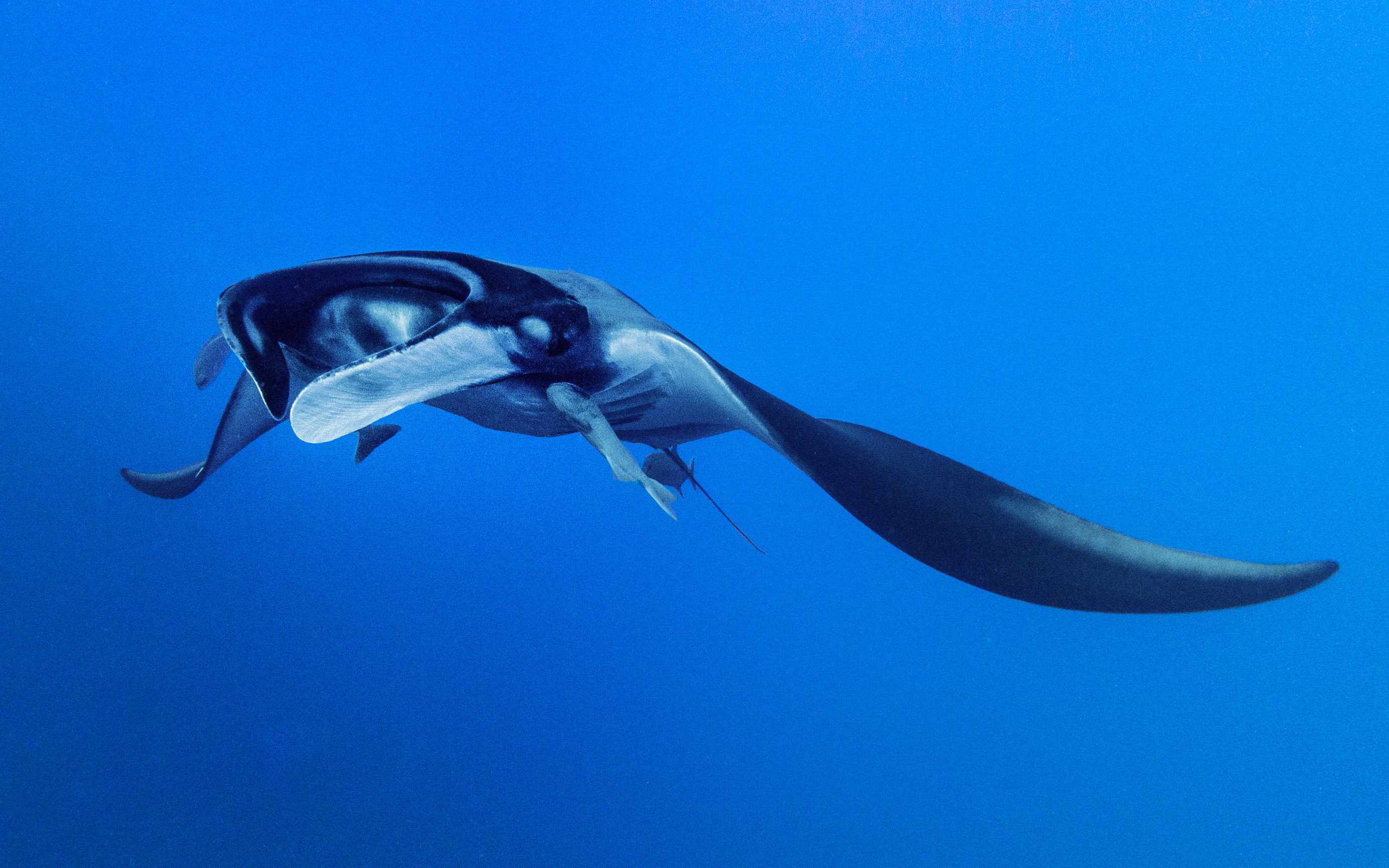
A few minutes went by and I still did not see anything except the vast blue. I even caught myself trying to stretch out my neck and squint my eyes, as if that was going to help me spot them. I checked my computer, and when I looked up, our divemaster was pointing ahead with one hand and signaling us to stop swimming with the other. I paused for almost a full minute without seeing anything—the only sound was my breathing. I began thinking it was a false alarm when several ghostly gray figures began to appear in the distance.
At first, I was not even sure what I was seeing. Their bodies were just silver, nebulous shadows without definition or clarity. But as they moved closer, their unmistakable, half–twisting, half–turning swimming pattern became apparent, and the shape of their scalloped heads became clearer and clearer. There were perhaps 30 of them, not tightly bunched, but close enough to maintain their ranks. I had never seen hammerhead sharks before and my heart was pounding, not out of fear or anxiety, but from sheer wonder and overwhelming excitement. They kept their distance, getting no closer than eight or nine meters, but it was close enough, and I mentally checked another item off my diving bucket list.
The hammerhead sharks did not stay long before slowly disappearing back into the vast blue water. Our group stayed motionless for a moment, and then we turned to each other in unison, flashing hand signals, pumping fists up and down, smiling and laughing into our regulators. Our divemaster turned us around, and we swam back to the large, oval-shaped rock of The Boiler. As if to congratulate us, a friendly chevron manta glided by, happy to bathe in our bubbles and get a good look at us.
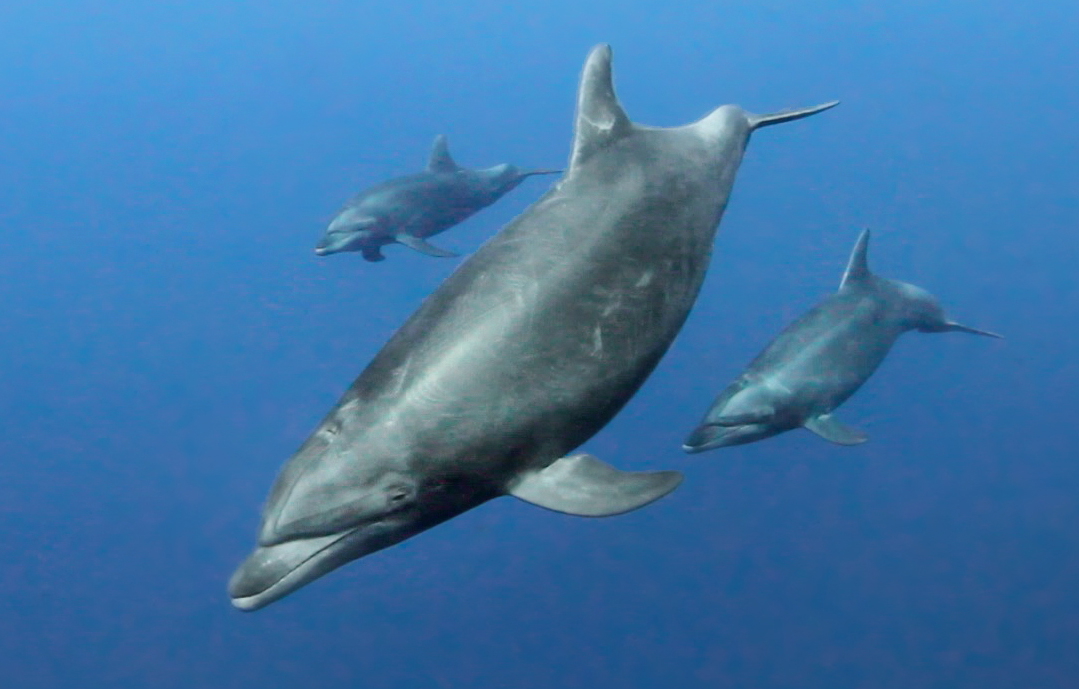
Do not follow the dolphins
Dolphins in Revillagigedo can sometimes exhibit a bizarre behavior around divers. We were warned about it when we first arrived, but to be honest, I was a bit skeptical until I saw it for myself. Our next dive at The Boiler was a nice, leisurely drift in the current, watching the sharks and mantas passing over the cleaning stations. It was hard to believe just how much life there was around the massive pillar and one could easily get lost in all the action, especially when the dolphins showed up.
This was another first for me. I had seen dolphins dozens of times while on the surface, but up to this point, I had never been lucky enough to actually spend any time with them in the water. We were watching a large school of hundreds of bonito tuna, as they passed by our group, when a small pod of bottlenose dolphins came to investigate.
My heart jumped and I raised my hands in surprise, alerting my buddies and trying to remember what our divemasters had told us on previous briefings. “When you see large pelagic animals here,” they instructed, “the best thing you can do is stop swimming. Don’t go after them, don’t try to get closer, just quit moving and wait patiently. Trust us, more often than not, they will come to you… all you have to do is be still.”
Of course, that was easier said than done. As soon as I saw them, I desperately wanted to swim towards them as fast as I could, to get as close as possible. But, thankfully, I, and the rest of our group, resisted that urge, and it paid off. As soon as we stopped moving, they veered towards us, and a trio actually slowed down to get a good look at Kate’s camera housing. And here’s where it got interesting.
One dolphin came in close, suddenly turned its body towards the surface and stopped swimming. It sat there motionless for just a moment, flippers out, nose straight up, and began to sink. It was a trick, we learned later. The dolphins want you to mimic their behavior, following them down into the dark blue waters below—it was like some kind of bottlenose game of Simon Says.
Apparently, many people have fallen for it and before anyone realizes what is happening, the diver is at 45 or 50m, his or her computer practically melting in decompression freak-out mode. Thankfully, none of us took the bait. But this is your friendly warning: When you visit Revillagigedo, don’t follow the dolphins—it’s a trap.
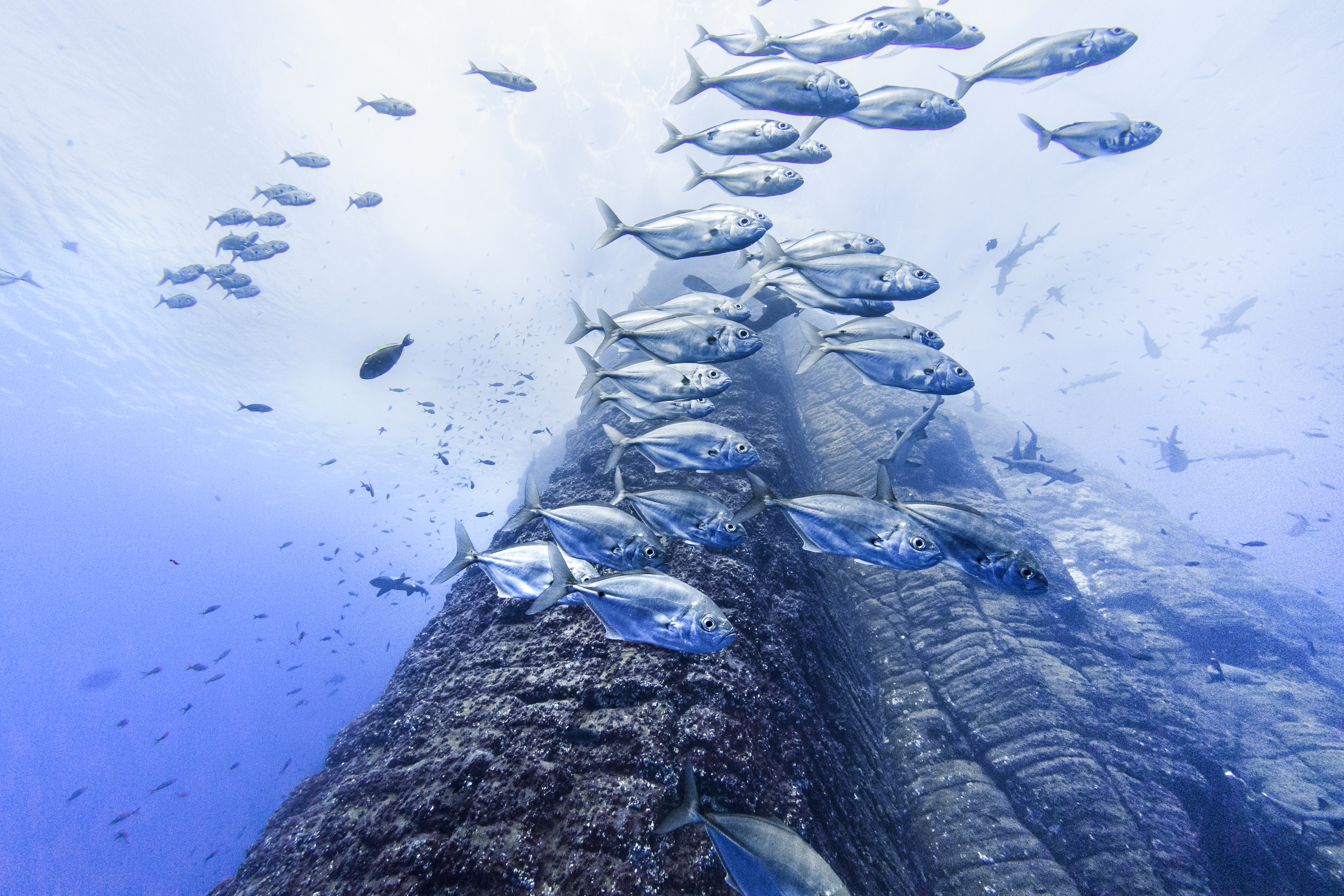
Roca Partida Island
Aboard the liveaboard, we moved on later that night, and the next morning, I was again up before dawn. The hostess, as usual, was ready with hot coffee and continental offerings. I grabbed a scone (I might have taken a cinnamon roll and a danish too, if I am being entirely honest) and went to the top deck to watch the silky sharks circle the boat as the sun rose over the small island of Roca Partida.
I am not much of a morning person in my daily life, but whenever I am diving, the day can never seem to start soon enough. I know it sounds silly and cliché, but I just get so damned excited to get into the water. It brings out the child in me.
Within an hour or so, the rest of the group had joined me, munching on their muffins and sipping their coffees. I could see that same excitement had washed over them as the divemaster gave us the dive briefing for the day. This time, they did not understate it at all.
Roca Partida is a special dive site—possibly the best dive site I have ever visited. This is no hyperbole. I mean it when I say it is truly astounding.
We back-rolled off the little rubber skiff on the lee side of the rock, and quickly dropped to 25m where we were met by scores of razor surgeonfish and massive bluefin tuna patrolling the steep wall. Several enormous spiny lobsters twitched their long antenna at us as we passed, and a pair of silvertip sharks veered around us on their way out into the blue waters.
We continued descending, following our guide, and finned out to catch the current, which swept us toward the first bend in the giant rock. When we rounded the northeastern corner, I could not believe what I was seeing. The water was completely filled with hundreds and hundreds of whitetip sharks. They were everywhere. Above us stretching up to the surface, below us as far as we could see, swarming around us from every direction—there was nowhere to look that was not absolutely teeming with them. My buddies held up their hands and laughed through their regulators. “Look at THIS!”
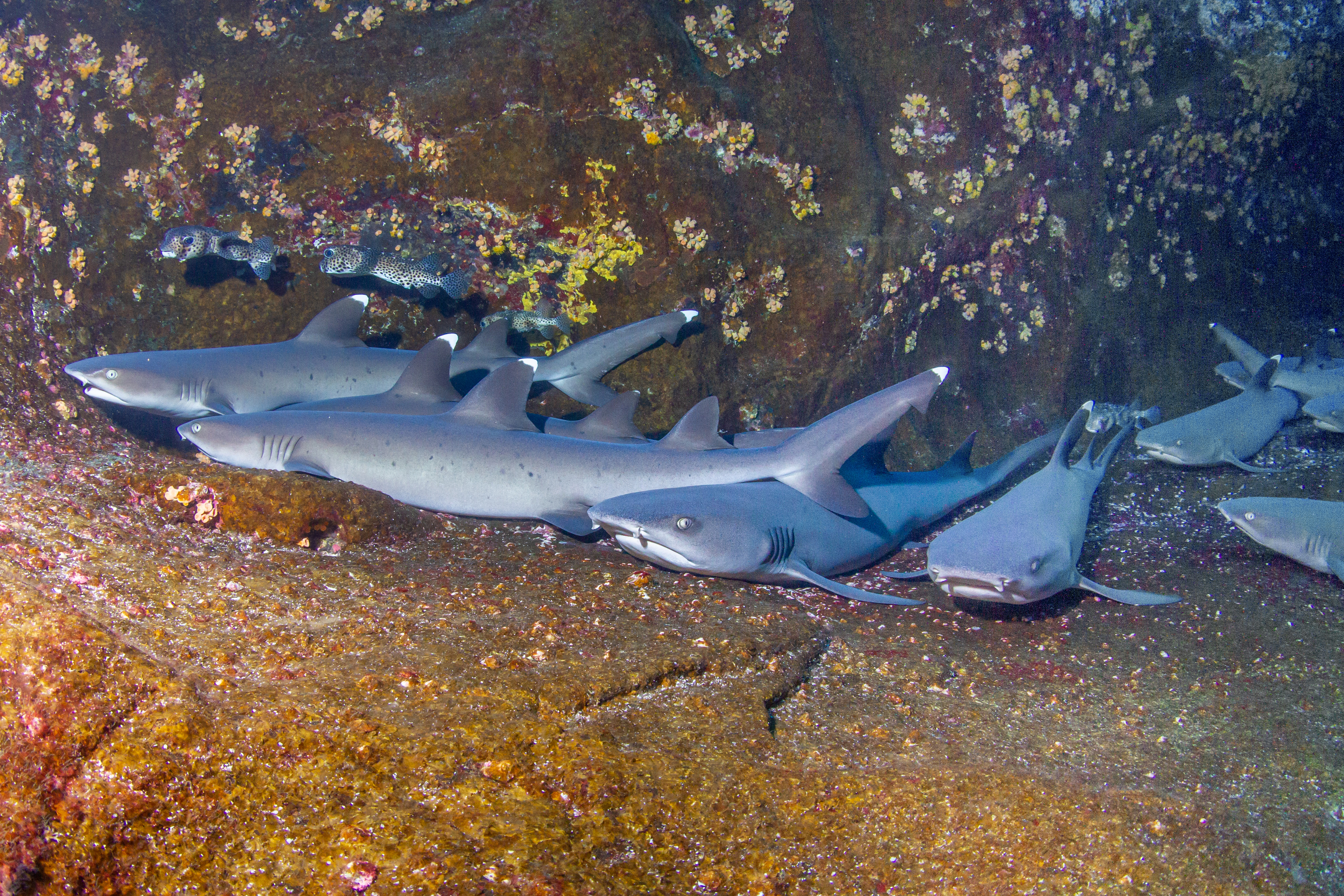
Even the rocky ledges were full of them. Twenty or thirty at a time were piled up on top of one another— mouths wide open to catch the current. Still more were trying their hardest to squirm their way into the masses of shark bodies in an effort to gain purchase on the rocky ledges, only to slip off the top of the pile and fight again for any available space to rest.
The current did not let us stay long, though, and it swept us around the far side of the rocky pillar where a large tiger shark, shy in these waters, was descending to deeper waters to get away from our party. Several large Galapagos sharks followed wary jacks, keeping tight ranks to our right, and to our left, a small pod of dolphins played near the surface, keeping an eye on the adolescents in their group. I had never seen anything like it. It was an absolutely perfect dive, and I was as happy underwater as I had ever been. I kept glancing at my air gauge, willing it to stay full.
But of course, it soon ran low, and earlier than everyone else’s, as usual. Dom, always willing to stay with me, even when his tank still has plenty of air, accompanied me up towards three meters. On our way, a massive school of bonito tuna swam by, their little silver bodies coruscating from the sun breaching the surface. A few more bottlenose dolphins showed up to keep us company. They did not linger, but they made us smile, and we flashed one another the Hawaiian shaka sign. They were followed by curious wahoo fish and two hungry mantas, which swam around us in slow, lazy circles, feeding at the surface. It was one of the best safety stops of my life.
As I said, Roca Partida is special. I encourage you to get there, whatever it takes. You will not regret it.
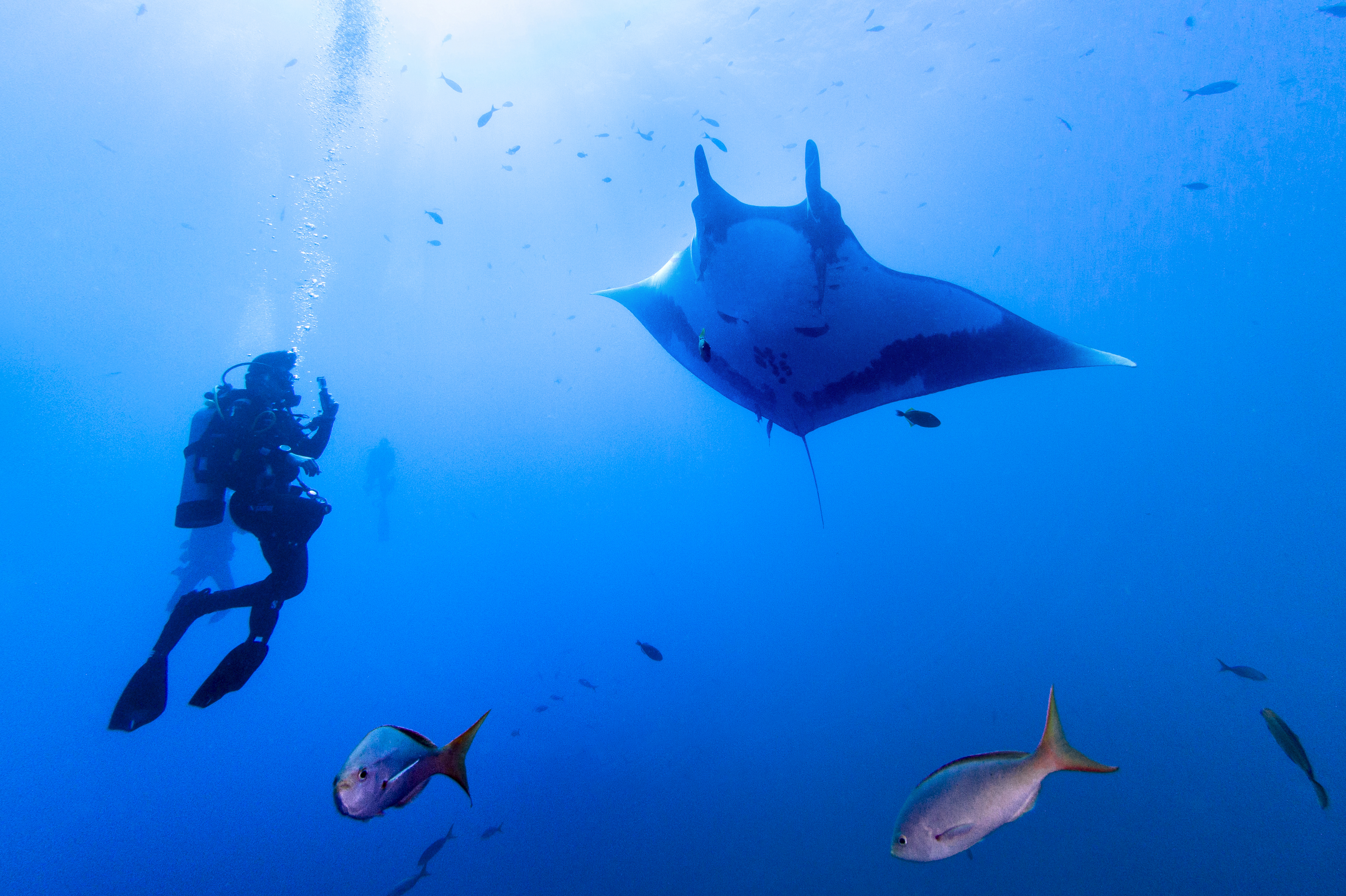
El Canyon—part two
On our last day of diving, we were back at El Canyon, and it did not disappoint. Our group of six was first in the water that morning and, while it was truly magical for me, it also taught me a good lesson. We back-rolled off our skiff and dropped down to 25m, following the rock wall that descended down from the lava flows at the surface. At this point, the ridge dropped off steeply, and beyond it was nothing but endless blue water.
We finned out a little distance, to see if we could get close to the hammerhead sharks again, careful to keep the rocks in sight behind us, lest we lose ourselves with no bearings, and this time, we were able to get right up close and personal. I checked my depth gauge when we stopped swimming and had not yet got my buoyancy right when three scalloped hammerhead sharks emerged from the blue and swam straight towards us.
As I said before, hammerhead sharks are usually cautious here, but no one had been in the water that morning, and I think they were a little surprised to see us so close to their cleaning station. They slowed down to get a good look at us, and swam past us in a long slow descending arch, twisting back and forth, their heads rolling from left to right.
We were within three meters of them, so close I could see their pupils clearly, staring and searching. I could see their gills rippling. I could see the teeth of one in sharp detail when it opened its mouth slightly. My heart was racing as they continued their slow, dipping arch. After 30 seconds or so, they began fading into deeper waters and I watched, in a slight trance of wonder, until they were gone, back into the blue.
I turned and raised my fists to my buddies, but they were gone as well. I turned back in the opposite direction, but they were not there either and I felt a tiny flash of anxiety shoot through my stomach. Why was I alone? Finally, I looked up, and there they were, a good distance above me, motioning me to ascend. I had not realized it, but during my close-up encounter with the sharks, I had forgotten my buoyancy and had sunk more than 15m in less than a minute. I looked at my computer and I was dangerously close to going into decompression if I did not get myself into shallower waters in the next few moments.
This can easily happen here, and the divemasters were serious about warning us against it. There is something about large pelagics and seeing them in their natural habitats, especially at close quarters, which can make people completely unaware of anything but the animal in front of them. It happens most with the dolphins, we were told, but as I learned firsthand, it happens frequently with tiger sharks and hammerheads as well.
These are the situations when forgetting your basic diving skills can get you into trouble. Keeping your wits about you is always important when underwater, but when you are diving in places like Revillagigedo, it is an absolute must.
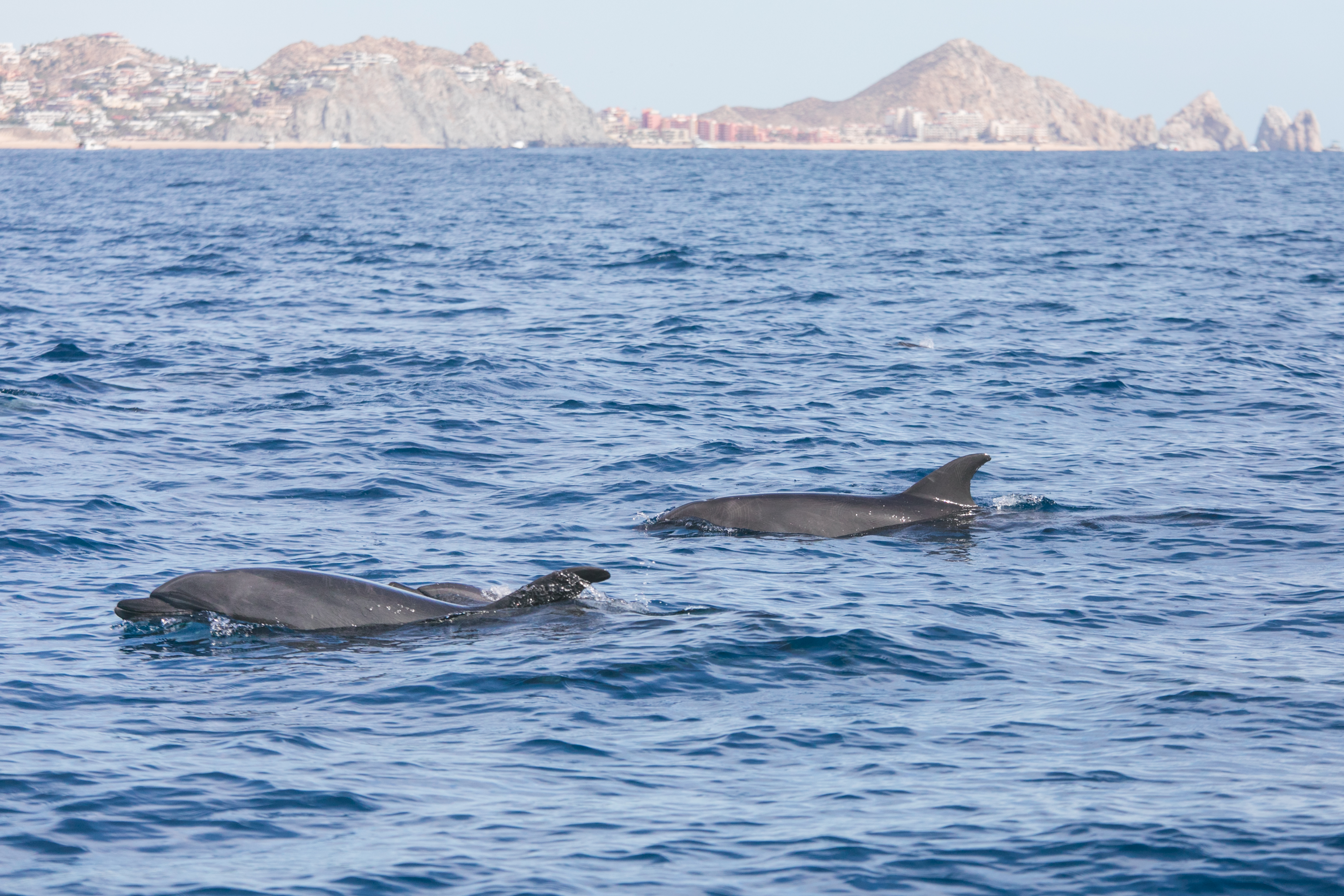
Home again
The last day of any trip to the Revillagigedo Archipelago is spent sailing back to Cabo and reveling in blissful relaxation and gluttony, which you will need after five days of serious diving. I suggest you spend your last few hours soaking in the hot tub at the rear of the second deck, watching the occasional pod of dolphins, looking for whales and sipping hot cocoa with a splash of Baileys, reliving the many amazing moments you experienced. Every aspect of our trip was bliss from top to bottom, start to finish. The food was spectacular, the hospitality was top-notch, and the diving was seriously next-level. ■
Kelly LaClaire is a dive writer based in Portland, Oregon, and his cousin, Kate Holt, is an underwater photographer from the same city. They travel as a team to cover dive locations in the Americas, the Caribbean and the Pacific. For more information, visit: bendettioptics.com or kateholtphotography.com
